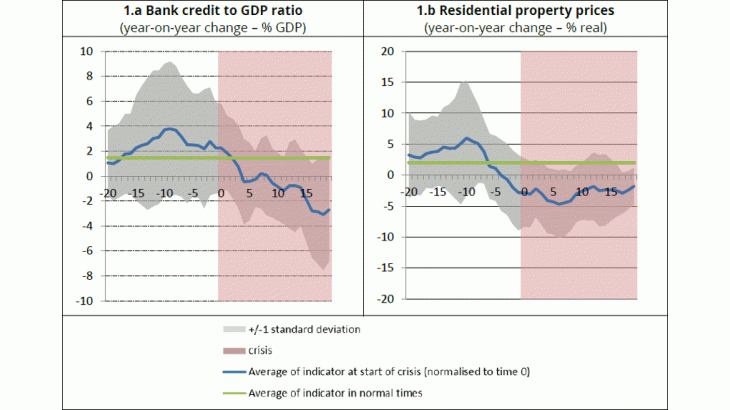Achieving the preventive objective of macroprudential policies
The aim of macroprudential policy is to prevent the risks that could lead to a systemic financial crisis, i.e. which spreads to the whole financial system with negative effects on the real economy. In order to reach this goal, macroprudential regulators, such as the Haut Conseil de Stabilité Financière (HCSF - High Council for Financial stability) in France, use binding regulatory instruments.
There are at least two reasons for this preventive objective, (as opposed to a resolution objective): (i) institutionally, some macroprudential measures are only enforceable after a certain time; it is therefore essential to take steps as early as possible in order to give the players concerned time to adjust and encourage them to adopt cautious behaviour; (ii) economically, the effects of macroprudential measures are not instant, but act with a lag, making it necessary to intervene as early as possible. Such early intervention makes it less expensive to deal with adverse developments in the dynamics of asset prices, the supply and demand for credit or debt levels which could result in a financial crisis.
To achieve this preventive objective, a range of macro-financial indicators are necessary to detect financial crisis risks. This approach must avoid two pitfalls: the first is being too risk adverse, with the risk that the least warning signal triggers a response from the authorities. This would result in making decisions too frequently, which are not economically justified and which could lead to an undesirable rise in the cost of financing. Ultimately, these measures could turn out to be costly in terms of economic growth. The second pitfall is, conversely, being reluctant to take preventive measures even though risks are building up, to the extent that warning signals are being ignored. In order to detect a crisis, the right balance must be struck between these two extremes.
An econometric tool: early warning systems
The macroprudential authorities have developed early warning systems to try to predict crisis. These systems identify the stylised facts from a range of macro-financial indicators which preceded past financial crises. Once these facts have been identified, they are compared with the current level of the indicators thus enabling an assessment to be made. Furthermore, the warning signals from these systems must be credible and robust. In other words, they must have been effective in detecting past crises.
By constructing such an early warning system, Coudert and Idier (2018) showed notably that indicators associated with property prices, bank credit or debt (especially to the private non-financial sector) are good predictors of banking crises in France and the euro area. Charts 1.a and 1.b show the average change in two indicators (and the associated standard deviation) for 10 euro area countries in the run-up to financial crises referenced by the European Systemic Risk Board (ESRB). The first indicator is bank credit to the private non-financial sector as a percentage of GDP. The second indicator is the real percentage change in residential property prices (deflated by the consumer price index). Based on this 10-country sample, 17 crisis events were identified as of 1985, lasting on average five years each.
Although these crises are specific to each country under review, the run-up periods show several common features. For example, during these periods, banks tend to lend more: outstanding bank credit rises, each year, on average by 4 percentage points of GDP at 10 quarters before the crises, compared with just 2 percentage points in normal times (Chart 1.a). Simarly, financial crises often follow property price booms: for instance, property prices rose by 5% per year 10 quarters before the crises on average in the 10 sample countries (Chart 1.b). In both cases, since these peaks occur well before the crises, authorities could act preventively by monitoring these indicators in real time.

